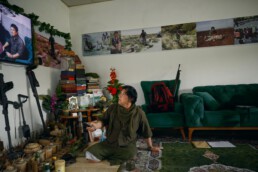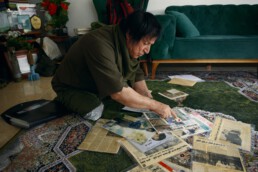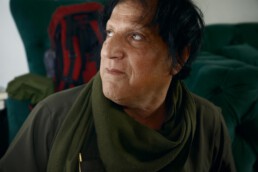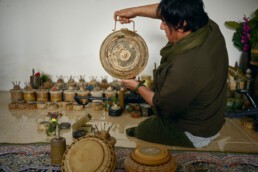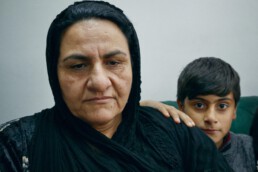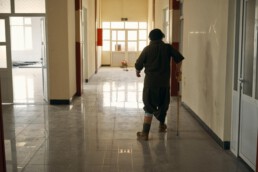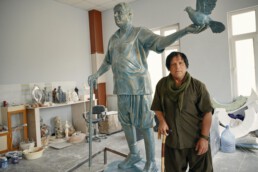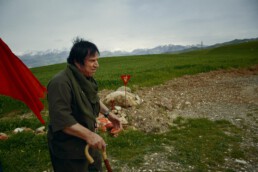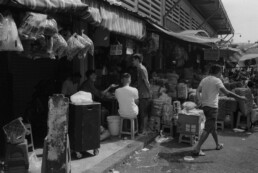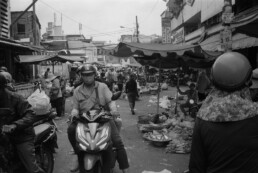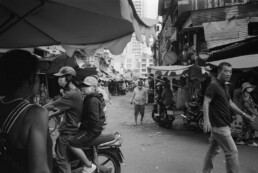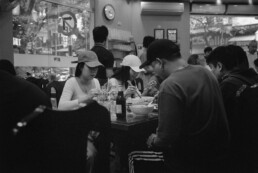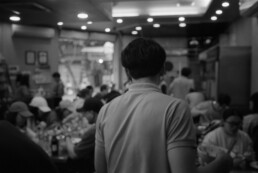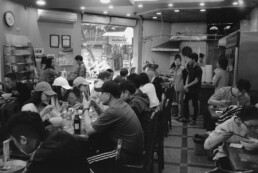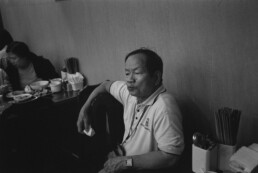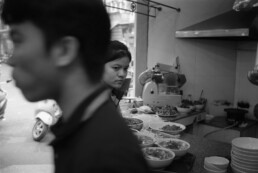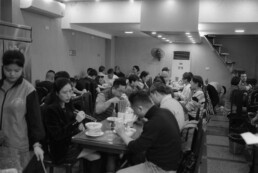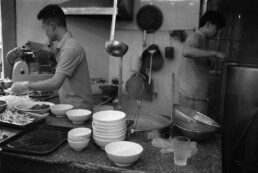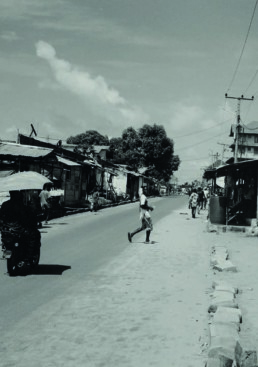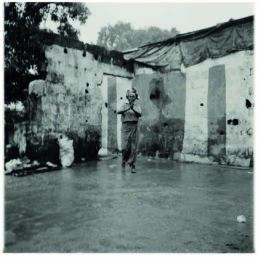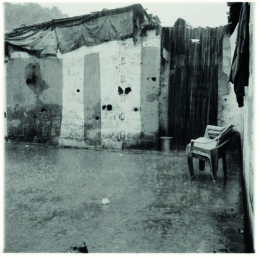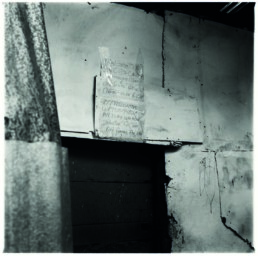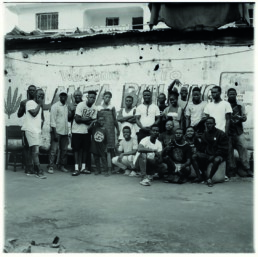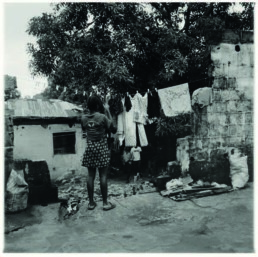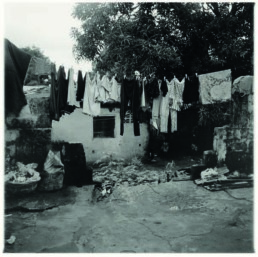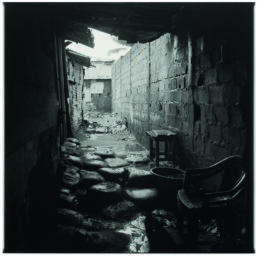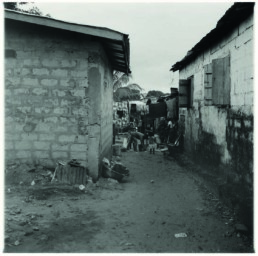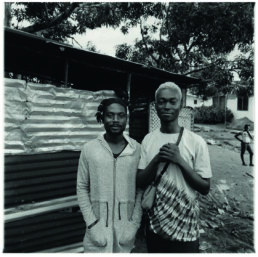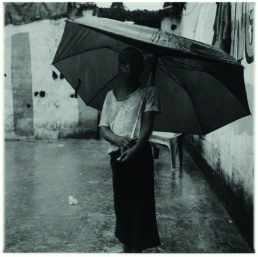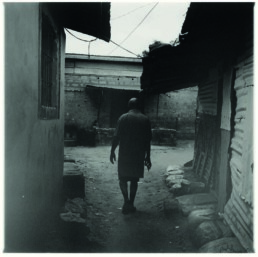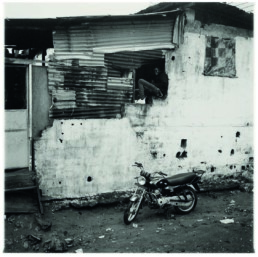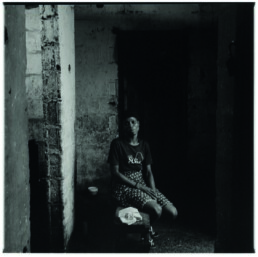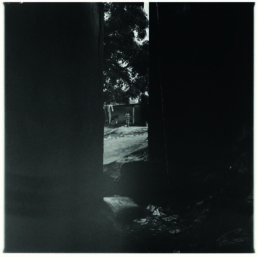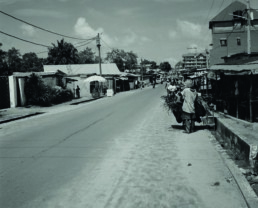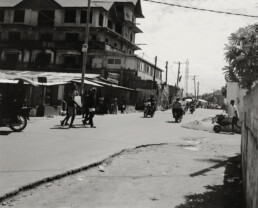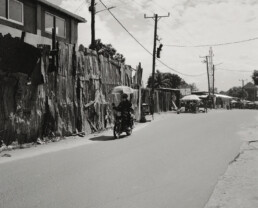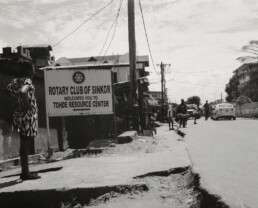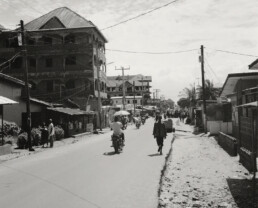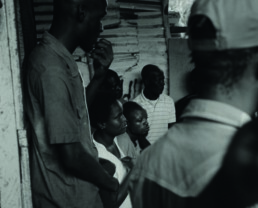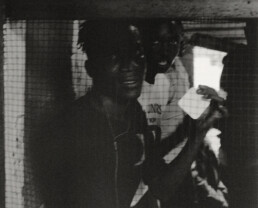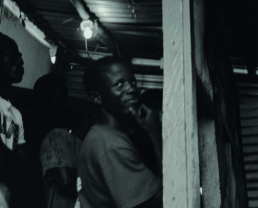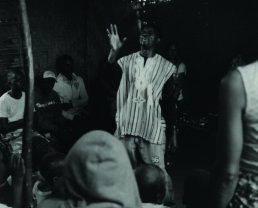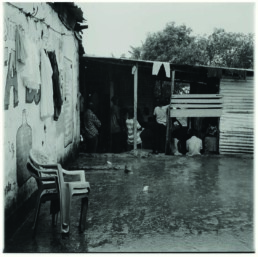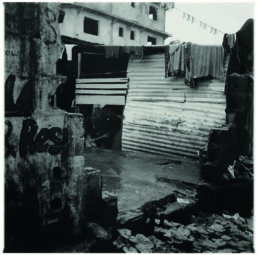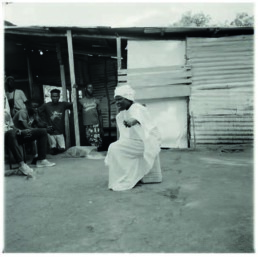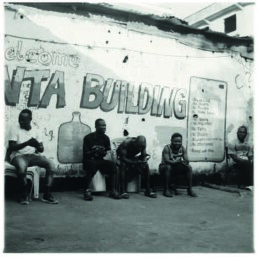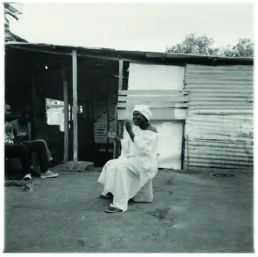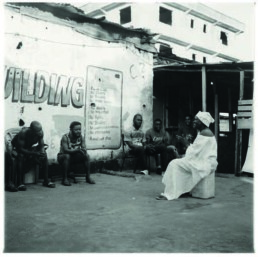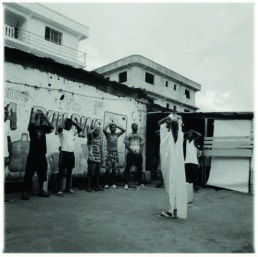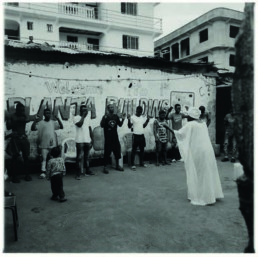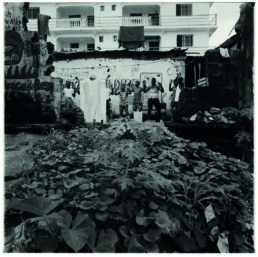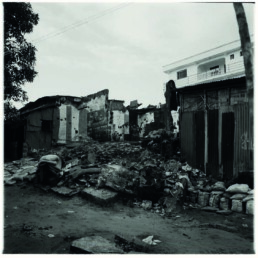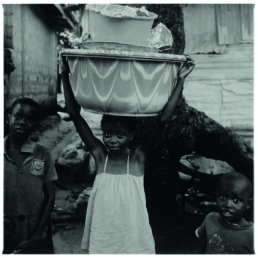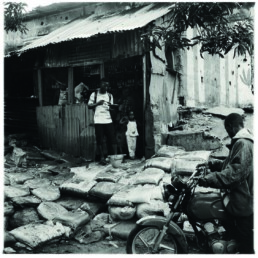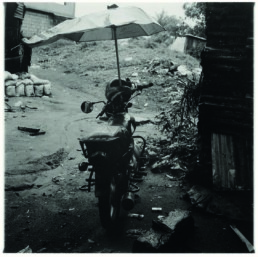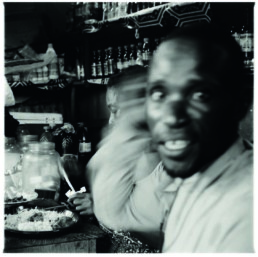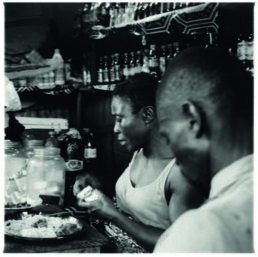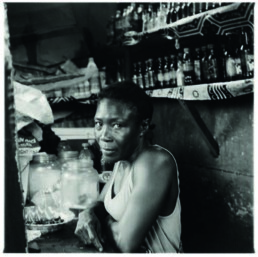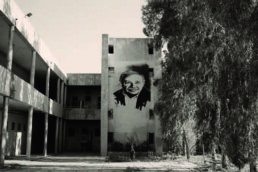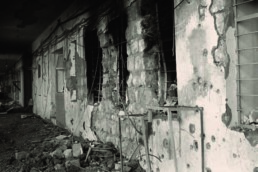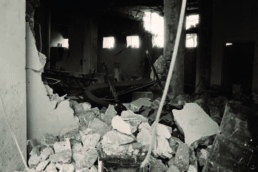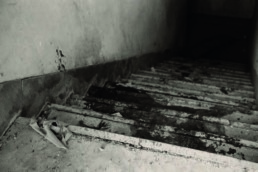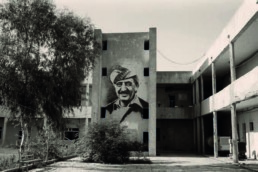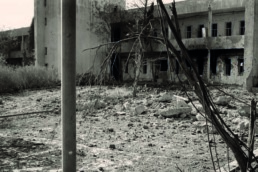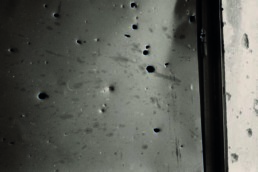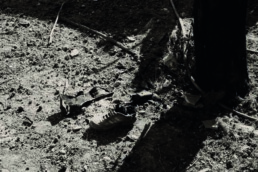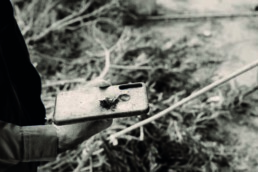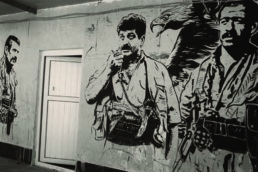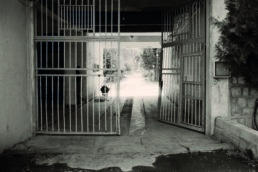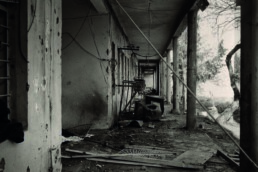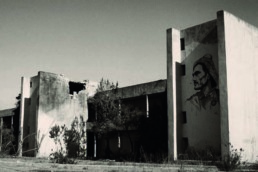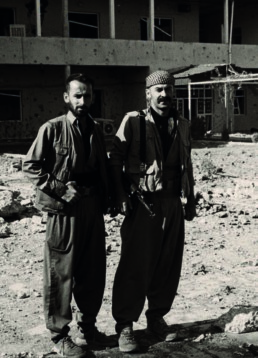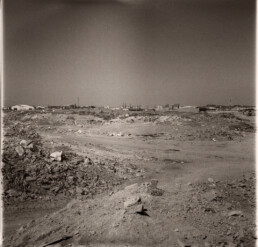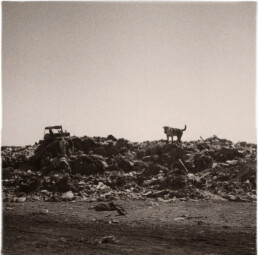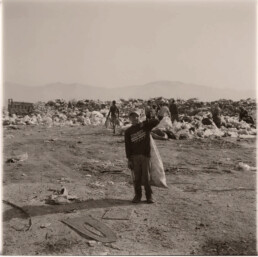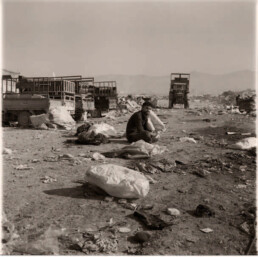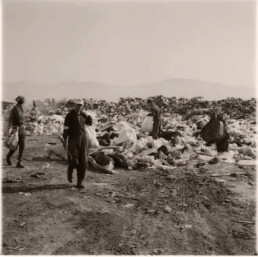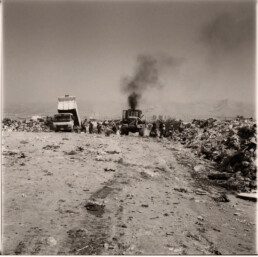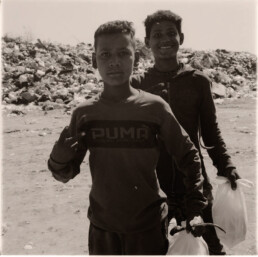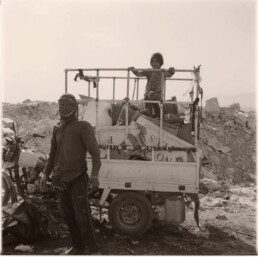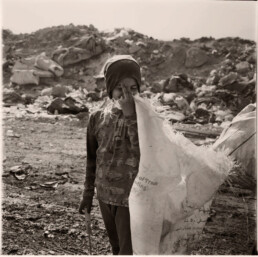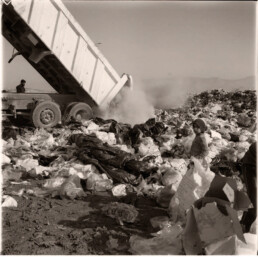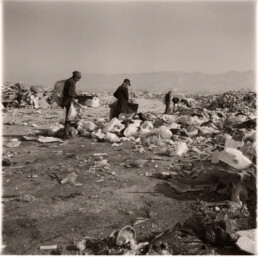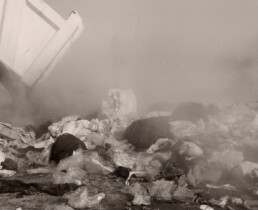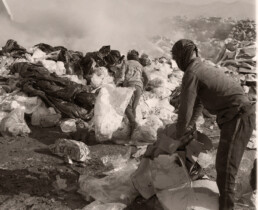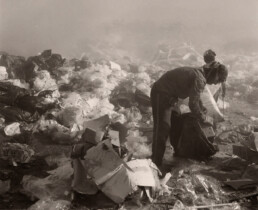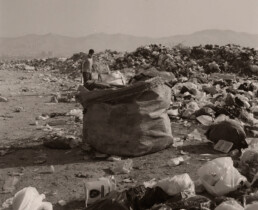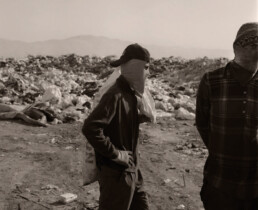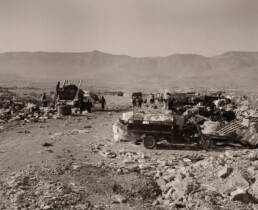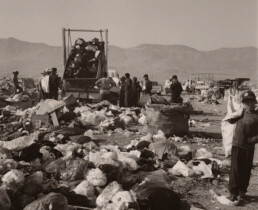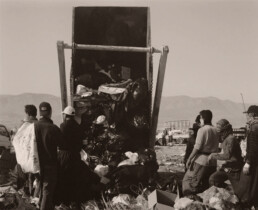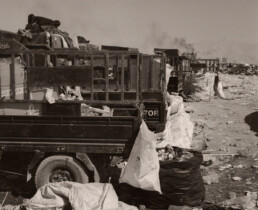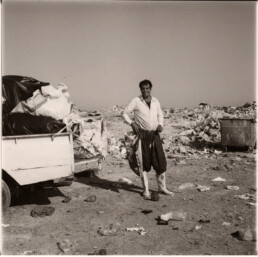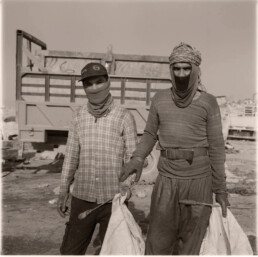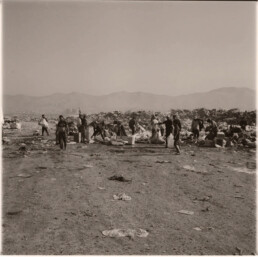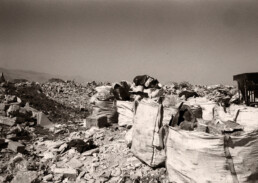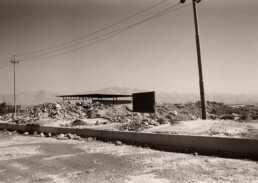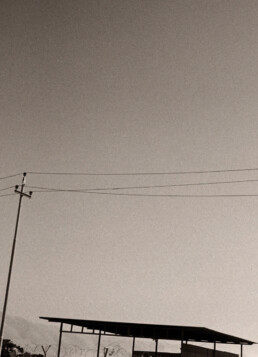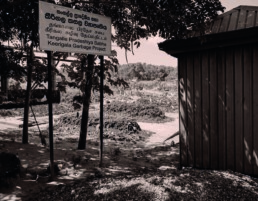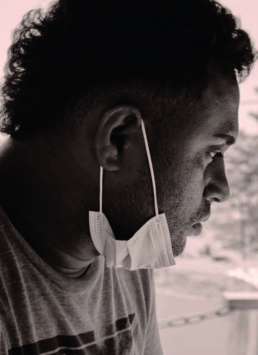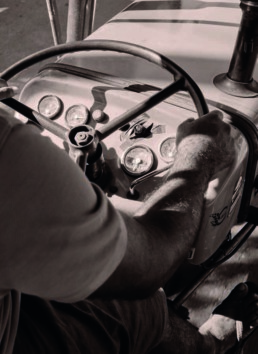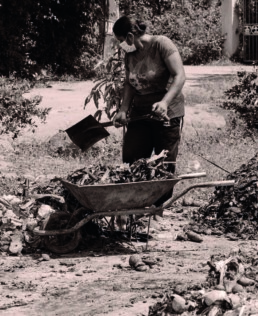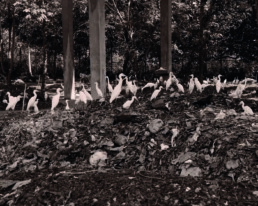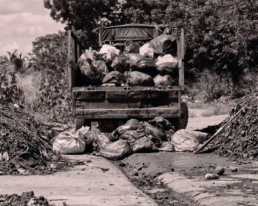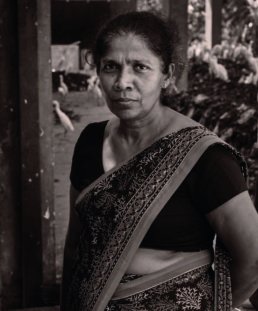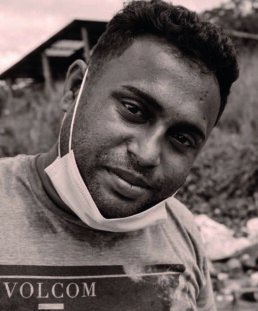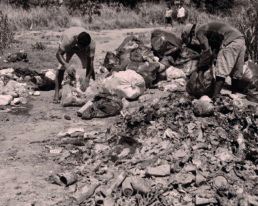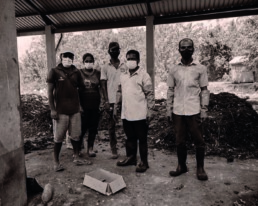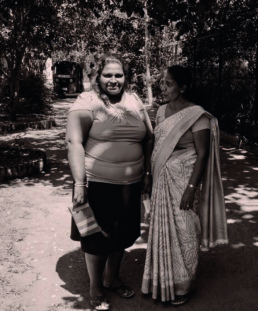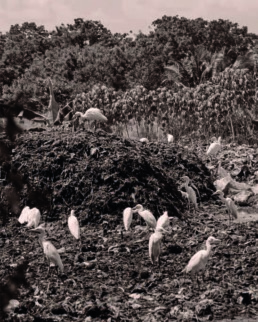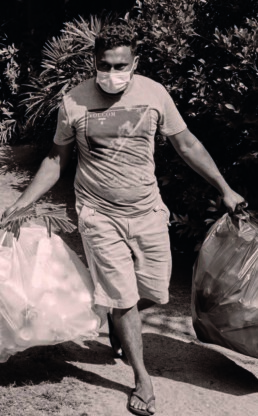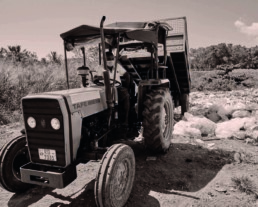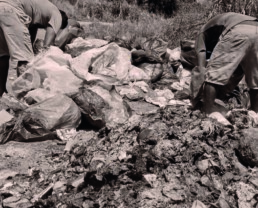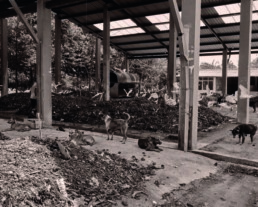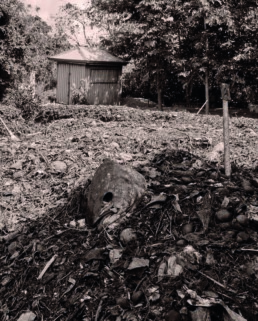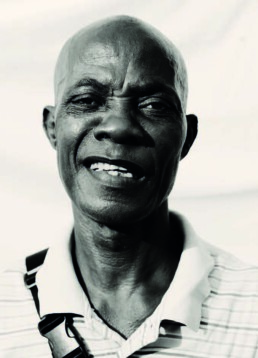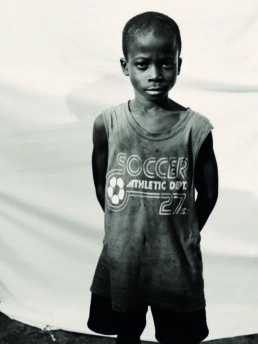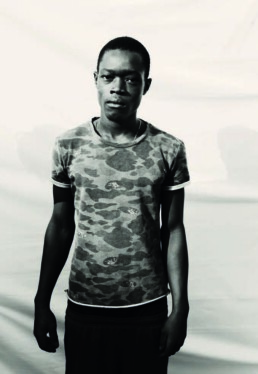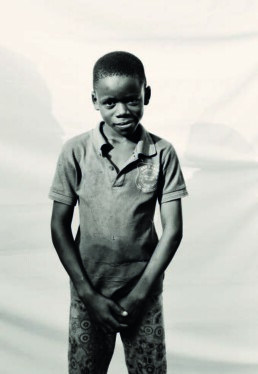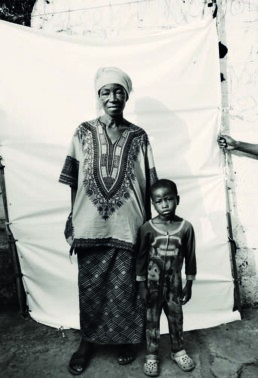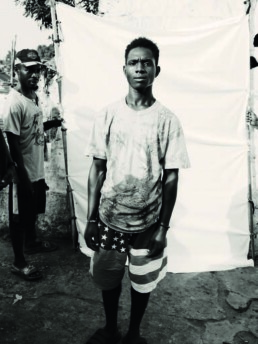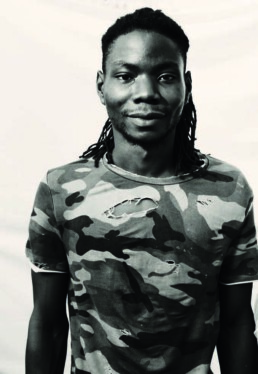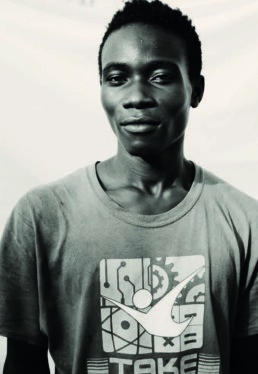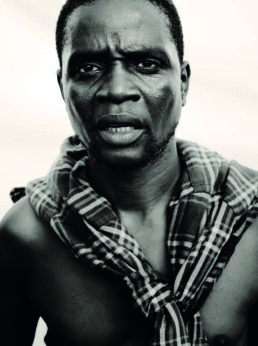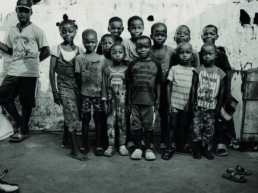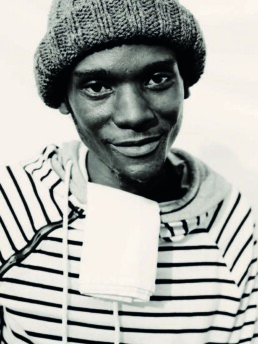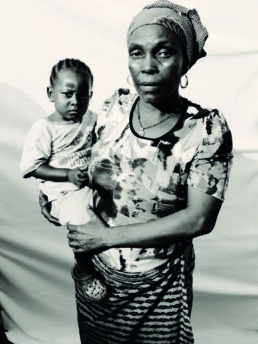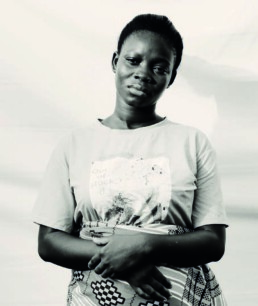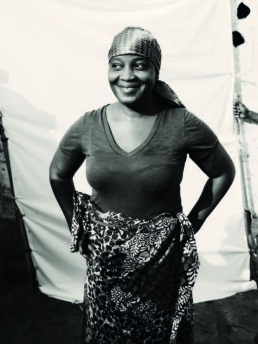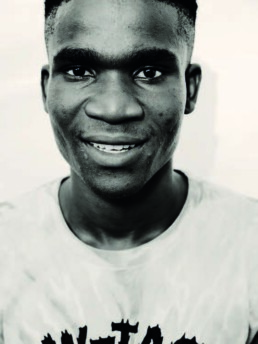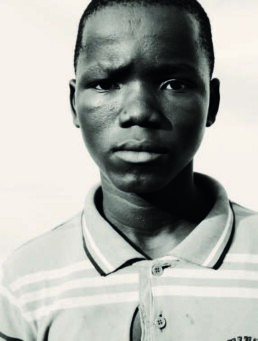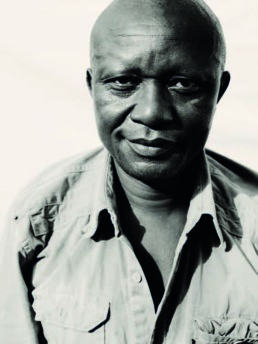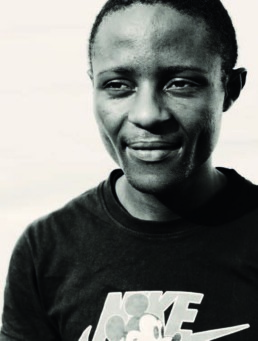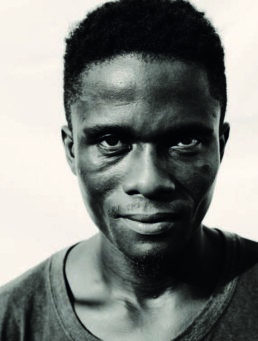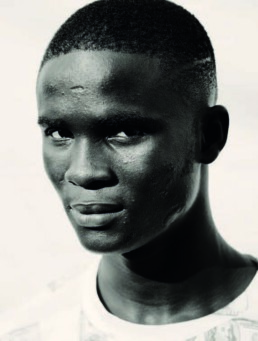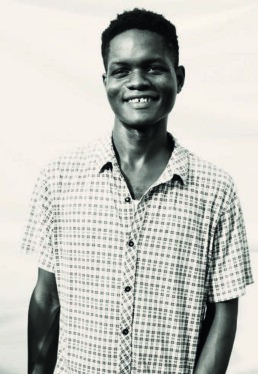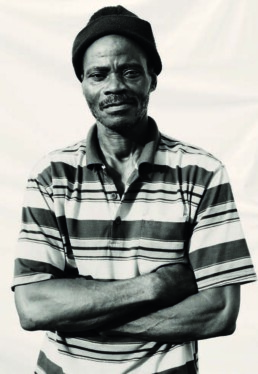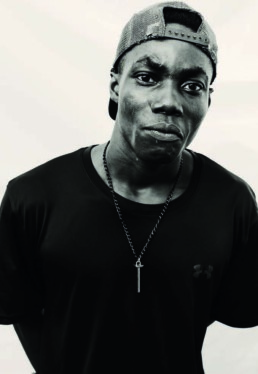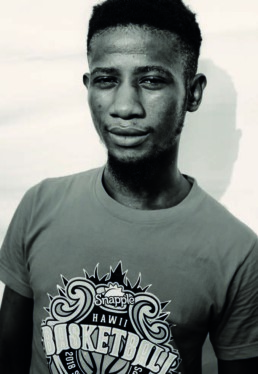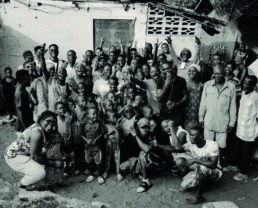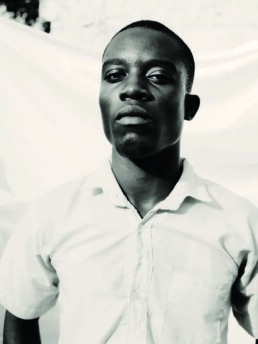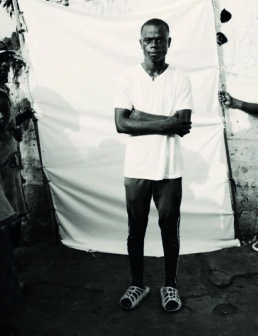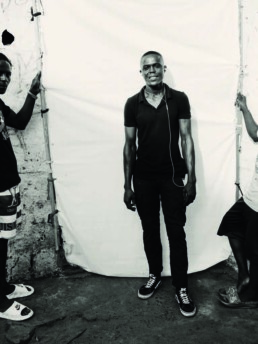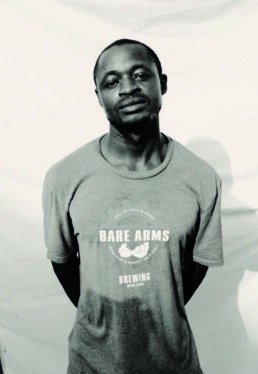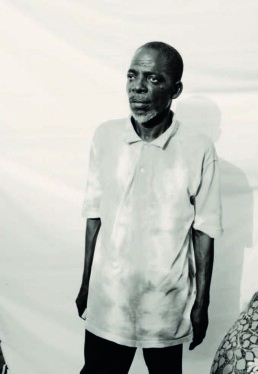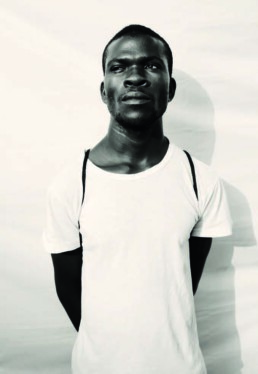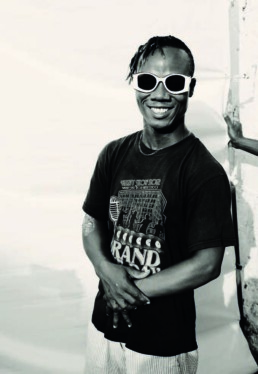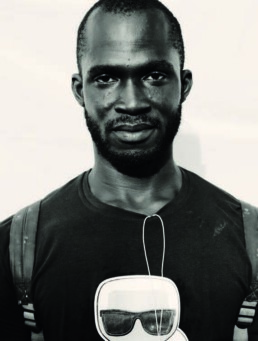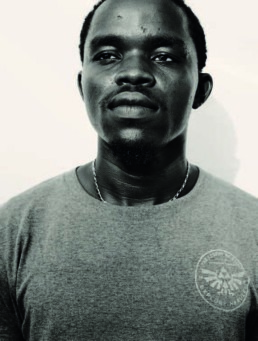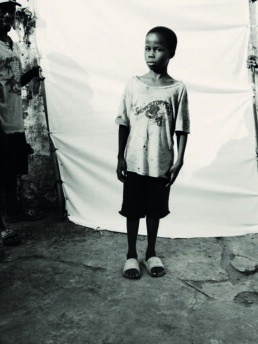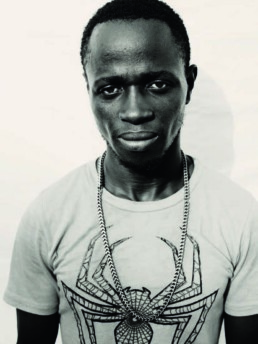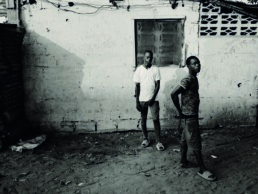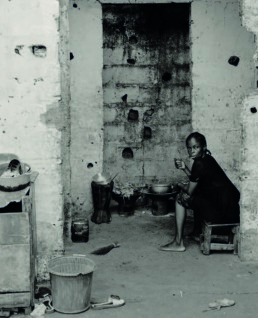Hoshyar Ali – Hero without legs
N35° 10' 47.780" E45° 58' 55.315"
Hoshyar Ali – Hero without legs
The legs, or rather the fragments of the legs, are already there. Went ahead. To the cemetery. The right one went in 1989, the left one in 1994, ripped apart and separated by exploding landmines. Their owner continues to defuse landmines. Just without legs, on all fours. General and hero of Halabja. In the east of the Kurdistan region Iraq, not far from Iran.
Hoshyar Ali has defused about 2.5 million landmines. This has been recorded. In the green hills around Halabja; the city made headlines in 1988. Saddam Hussein’s henchman, General Ali Hassan Al-Majid, also known as Chemical Ali, poisoned the city. He had the rebellious Kurds, who did not want to be ruled by Saddam Hussein in Baghdad, misted with a lethal apple scent. Anfal, „loot,“ The campaign against the Kurds was called anfal, “loot”. Approximately 5000 men, women, infants and elderly inhabitants died miserably from this cocktail of poison gases that smelled of green apple. Ali was lucky that morning in 1988. He was on patrol with comrades in Penjuin, about 75 km north of Halabja.
His luck ran out in 1989. During the Iran-Iraq war, the Iranians and the Iraqis under Saddam Hussein had buried countless landmines. Mostly small, brown or green devices, the size of a tin of tuna. Even today, walking in some mountain regions is not safe and mountain farmers still ask Ali for help. Standing upright with the metal detector until the first mine ripped off his left leg in 1989. Ali carried on. Then, in 1994, an Italian brown mine as big as a sweets tin exploded and took his other leg. What was left of his legs was collected and now lies buried in the cemetery next to the grave of his son, who died in a car accident aged 17.
Ali continues to search and clear, with two prostheses from Japan. He was invited and celebrated by a Japanese NGO, but Ali didn’t like the food there. Not Kurdish, he says. His voice is energetic and loud. We are sitting on the floor. Dozens of newspaper articles in a multitude of languages and sealed in plastic lie on the floor, a testament to his celebrity status. Broadcasters from all over the world dedicated reports to him. A hero, yes, but one who also provokes an incomprehensible shaking of heads. What drives a father of two daughters and two sons to literally crawl on all fours through the dusty, stony fields and mountain slopes, defusing small and large monsters? It is my calling, says Ali Hashyar. For humanity. His wife, Geles, looks sad and thoughtful as the family settles down on the green sofa, her gaze trained down, into empty space . Does she fear for her husband? Every time he goes to work, she says, but she is also proud. He is doing his work for the sake of humanity.
Ali explains mines. His area of expertise. Some of the man-made monstrosities are designed to tear off the enemy’s foot, others aim at the abdomen. Larger explosives tear the chest and head into pieces. There are also the ones specifically for cars. Ali has the entire range lined up and stacked in the living room. Others set up their sports trophies as memorabilia; Ali has mines. There are reports about Ali on TV, including a feature by the German television broadcaster ARD. The question everyone asks is: why?
Ukrainians recently visited to ask Ali for help. He will not go to Ukraine. There is still enough to do here. Ali has been searching for 38 years; he is 61.
The city wants to set up a large statue of Ali next to the anfal Monument, standing with his prostheses. On the face of an American mine, his face determined. Keep moving forward, keep going. With the dove of peace just settling on his left hand, as it has during his lifetime. Larger than life.
Vietnam
N21°1’42” E105°51’15”
Pho shop Hanoi Vietnam
Delicious! Pho is a traditional Vietnamese beef noodle soup and one of my favorite dishes. And I love the atmosphere in the pho shops – all are focused on eating. In January 2023, we had the pleasure to visit East Asia with a stay in Vietnam. Pho for breakfast, Pho for lunch, Pho for dinner. Go Pho!
The Planta Building
N6°16’56.7817“ W10°45’8.6373“
The Planta Building
“My home is my castle” – true, if one has a home. Others have to seek shelter in constructions that hardly deserve the term “building’. The Planta Building is located in the Smythe Road Community, on Old Road, one of the many slums in Monrovia, capitol of Liberia, on the West African coast. Run by a lady who sets the rules, its inhabitants are called “Zogos” – Liberian English slang for “zombie”. Mostly unemployed young men, who try to make ends meet by all necessary means, many of which fall outside the law, Zogos are often the abandoned children of former child soldiers from the cruel civil war that raged in Liberia between 1989 and 2003. The Planta Building is not only a shelter, but also a space for prayer and community. This booklet is part of a series of portraits shot in February and July 2022. – Munich, November 2022
Koya
N36°3’53.2296” E44°36’10.5822”
Koya
Koya, Kurdistan Iraq: Headquarter of the Kurdistan Democratic Party of Iran (KDPI). The HQ was attacked by the Iran Revolutionary Guard Corps (IRGC) on September 28, 2022
“This operation will continue with our full determination until the threat is effectively repelled, terrorist groups’ bases are dismantled, and the authorities of the Kurdish region assume their obligations and responsibilities,” the IRGC said in a statement read on state television. Thirteen people were killed and 58 wounded, according to Iraq’s state news agency. Iranian authorities have accused Iranian-Kurdish separatists based in northern Iraq of involvement in protests in Iran that have led to the deaths of dozens of people.(Al Jazeera 29.9.2022). The pictures were shot in the morning of October 13, 2022. The closest I came to see death, yet. – Frankfurt, November 2022
Sulaymaniah
N35°2’3.3366” E45°26’13.1543“
Sulaymaniah
Most of us have to work in one way or another to earn a decent living. As they say, there is no free lunch in this world. But some have to work harder than others, toiling in unbearable, life-threatening conditions for just a few cents a day, enough to buy a bowl of rice. Under a burning sun, the polluted air hanging like a dense fog, the young people I met in early October 2022, fifteen kilometers southeast of Sulaymaniah, Kurdistan, Iraq, belong to an industry recycling the world’s garbage. Protected only by worn-out sneakers, they separate trash from the Sulaymaniah region, an area with a population of about two million, at a huge dump site where the garbage extends to the horizon. Here, plastic, wood, and metal are divided by hand, then sold to local companies by a work force barely surviving at the bottom rung of the value chain. – Munich, December 2022
Garbage Collectors Sri Lanka
N6°01’29.4” E80°47’34.4”
Garbage Collectors
Sri Lanka
Have you ever asked yourself where the garbage goes that we inevitably produce while spending time at beautiful beach hotels? I followed the garbage collectors in Southern Sri Lanka. What I found one can see below. The sour poisonous smell and the hazardous working conditions for 3 USD per day cannot be captured but need your imagination while watching the pictures. I am grateful to Keerthi Iresha and her team who let me experience a workday with open arms.
Smythe Road
N6°16’56.7817“ W10°45’8.6373“
Smythe
Road
In February 2022, I visited again Liberia, West Africa, for family reasons. In the capital, Monrovia, I had the opportunity to take portraits in one of the many slums – “Smythe Road”, near Old Road Market…
The area is probably no bigger than half a square kilometer and without any recognizable boarder, and part of a seemingly endless community of worn-down houses, sheds built of metal sheets, with some single fire trees showing optimistic red colors when in full bloom.

